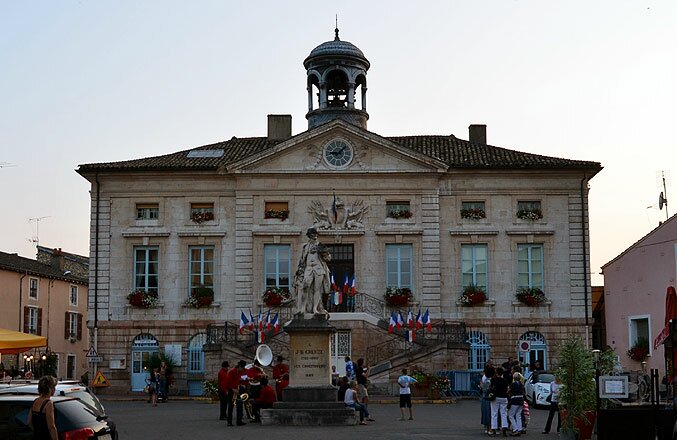 |
||
|
|
||
Politics![]() French Municipal Elections 2014
French Municipal Elections 2014

Above - mairie (town hall) in Tournus.
Municipal election in the town of La Roche sur Foron.
Municipal elections will be held in France on March 23rd and 30th, 2014. All of France’s 36,680 mayorships (maire) will be up for reelection. As will all city, town and village council (conseil municipal) seats. In total there are 926,068 candidates, 1 one for every 49 voters in France.
Most local political advertising in France is done via fliers or public space posters.
Depending on the outcome of the first round on March 23rd, a second round could be necessary in cities, towns and villages of more than 1,000 inhabitants where no list receive more than 50% of the vote in the first round and in villages of less than 1,000 inhabitants where not enough candidates to full all seats on the village council receive more than 50% of votes cast and votes equal to more than 25% of registered voters.
New for 2014, all lists in cities and towns of more than 1,000 inhabitants must have an equal number of men and woman alternating by gender. Once the city, town or village council is elected it will vote for the mayor. In general the candidate at the top of the list that wins the election will be elected mayor. Once the mayor is elected the council will elect his or her deputy mayors, called adjoints in French. Again there must be an equal number of women and men. Those elected, mayor and councilors will serve for six year terms.
In municipalities of more than 1,000 inhabitants in France voters vote for a list of candidates. The list can't be altered in anyway by voters. All all elected will represent the city or town as a whole, there are no individual districts. All seats are 'at large', except for Paris, Lyon and Marseille, that are divided into districts - see below.
In municipalities of less than 1,000 inhabitants voters vote for individuals. All all elected will represent the village as a whole. All seats are 'at large'. Should there be a tie among candidates, the oldest wins.
For municipalities of more than 1,000 inhabitants the election is a mix of direct and proportional representation. Any list that gets more than 50% in the first round or the most votes in the second will receive a bonus of half the council seats. The rest of the seats will be allocated proportionally among the lists that received more than 5% of the vote. Council seats will be filled by candidates in the order they are on in their respected lists. But candidates on a list can vacate and offer their place to some lower on the list. This often happens with those heading a defeated list. Any list that obtains more than 10% of the vote in the first round can compete in the second. Between rounds lists can reorder and any list that received more than 5% of the vote can merge with another list as long as that list received more than 10% of the vote.
For France’s three biggest cities Paris, Lyon and Marseille there cities within cities in that each city has an elected citywide mayor and council plus district mayors and councils based on the cities arrondissements (districts), in Marseille they are called secteurs.
Short video explaining how municipal elections in France work.